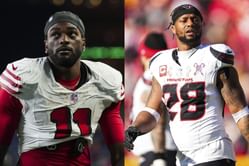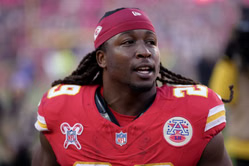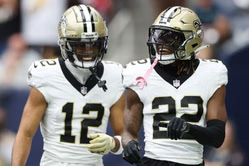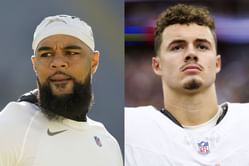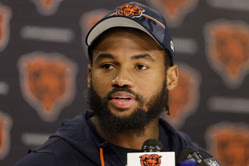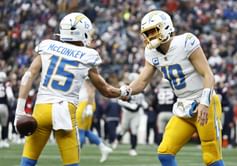NFL Fantasy Football is a game in which participants create a virtual team composed of NFL players and compete against other participants. The objective of the game is to accumulate points based on the statistical performance of the players on the team throughout the NFL season. The draft is the most critical component of any Fantasy Football season, as it determines the players that participants will have on their teams for the duration of the season.
A Fantasy Football draft is a process in which participants select players from the NFL to fill the roster of their virtual team. The draft usually takes place before the start of the NFL season and can be conducted in several ways, such as in-person or online.
Importance of Draft Strategy
Draft strategy is critical to success in NFL Fantasy Football because it determines the foundation of a participant's team for the entire season. A well-thought-out draft strategy can give participants a significant advantage over their opponents, while a poor strategy can result in a subpar team that struggles to compete.
Here are some reasons why draft strategy is so important in NFL Fantasy Football:
Draft Position: The draft position can significantly impact the players available for selection, making it important for participants to have a strategy based on their position in the draft order.
Building a Balanced Team: Participants need to select players who complement each other and create a balanced team that can perform consistently across all positions.
Identifying Value Picks: Successful draft strategies involve identifying value picks - players that can outperform their draft position - that can provide a significant advantage throughout the season.
Adapting to Draft Trends: Participants should keep up with the latest draft trends and adjust their strategies accordingly to avoid being caught off guard.
Injury Mitigation: Draft strategies should account for injuries by selecting players with adequate backups or depth at each position.
Avoiding Overdrafting: Participants should avoid over-drafting by selecting players based on their actual value, rather than simply their name recognition or hype.
Ultimately, a successful draft strategy requires careful planning, research, and an understanding of the key factors that impact player performance. By developing a solid draft strategy, participants can set themselves up for success and give themselves the best chance to win their NFL Fantasy Football league.
With the 2024 fantasy football season on the horizon, be sure to check out our free Fantasy Football Trade Analyzer to lock down your squad for the year.
Pre-Draft Preparation
Pre-draft preparation is critical for success in NFL Fantasy Football. A well-prepared participant can make informed decisions during the draft, identify value picks, and build a balanced team that can perform consistently throughout the season. Here are some key steps for pre-draft preparation:
Study Player Rankings and Projections: Participants should study player rankings and projections from multiple sources to understand which players are likely to perform well during the season. This information will inform their draft strategy and help identify value picks.
Analyze NFL Team Offenses and Defenses: Participants should analyze NFL team offenses and defenses to understand how they may impact player performance. For example, a wide receiver may be less valuable if the team has a strong running game.
Understand League Scoring and Rules: Participants should understand the scoring and rules of their league to identify players who are most valuable in that specific league format. For example, in a PPR (points per reception) league, wide receivers who catch a lot of passes may be more valuable than those who primarily score touchdowns.
Mock Drafts: Participants should participate in mock drafts to practice their draft strategy and identify potential draft scenarios. Mock drafts can also help participants understand which players may be available at different points in the draft.
Player Injury Status: Participants should keep track of player injury status and potential suspensions, as this information can significantly impact a player's performance and value.
Draft Strategy: Participants should develop a draft strategy based on the information gathered during pre-draft preparation. A solid draft strategy should consider the participant's draft position, positional scarcity, depth, injury mitigation, and more.
Overall, pre-draft preparation is essential to developing a successful draft strategy. By studying player rankings and projections, analyzing NFL team offenses and defenses, understanding league scoring and rules, participating in mock drafts, keeping track of player injury status, and developing a solid draft strategy, participants can set themselves up for success in NFL Fantasy Football.
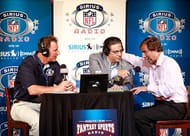
NEW YORK - JULY 21: Former NFL player Rich Gannon, Sirius XM radio host Adam Schein, and Sirius XM radio's Chris 'Mad Dog' Russo attend the SIRIUS XM Radio celebrity fantasy football draft at Hard Rock Cafe - Times Square on July 21, 2010 in New York City. (Photo by Mark Von Holden/Getty Images for SIRIUS XM Radio)
Draft Day Strategy
Draft Day is the most critical day of the NFL Fantasy Football season. It is essential to have a solid draft strategy to make informed decisions, identify value picks, and build a competitive team. Here are some key strategies for Draft Day:
Stick to Your Draft Strategy: Participants should stick to their pre-draft strategy, but also be flexible and able to adjust to the changing draft circumstances.
Identify Value Picks: Participants should identify value picks, players that can outperform their draft position, and select them accordingly.
Positional Scarcity: Participants should prioritize positions with a limited number of elite players, such as running backs or wide receivers, to ensure they have a competitive advantage over their opponents.
Be Mindful of Bye Weeks: Participants should consider the bye weeks of their selected players to ensure they have adequate coverage during weeks when key players are unavailable.
Avoid Over-Drafting: Participants should avoid over-drafting by selecting players based on their actual value, rather than simply their name recognition or hype.
Monitor Draft Trends: Participants should monitor draft trends, including which players are being selected, to avoid being caught off guard and missing out on valuable players.
Build a Balanced Team: Participants should select players that complement each other and build a balanced team that can perform consistently across all positions.
Keep Track of Player Injuries: Participants should keep track of player injury status and potential suspensions, as this information can significantly impact a player's performance and value.
Utilize Draft Tools: Participants should utilize draft tools, such as cheat sheets and draft boards, to help them stay organized and make informed decisions during the draft.
Overall, a successful Draft Day strategy requires a combination of preparation, research, and flexibility. By sticking to their draft strategy, identifying value picks, being mindful of bye weeks, avoiding over-drafting, monitoring draft trends, building a balanced team, keeping track of player injuries, and utilizing draft tools, participants can set themselves up for success in NFL Fantasy Football.
Post-Draft Analysis and Adjustments
Post-draft analysis and adjustments are essential to ensure a successful NFL Fantasy Football season. Here are some key steps to take after the draft:
Analyze Your Team: Participants should analyze their team and identify areas of strength and weakness. This will help them make informed decisions when making adjustments throughout the season.
Check for Injuries and Suspensions: Participants should check for player injuries and suspensions that may have occurred during the draft. If any key players are injured or suspended, participants may need to make adjustments to their roster.
Make Necessary Adjustments: Participants should make necessary adjustments to their roster, such as picking up players who may have gone undrafted but have potential value or dropping underperforming players for more promising options.
Monitor Waiver Wire: Participants should monitor the waiver wire to identify potential free agents that could improve their team. This could include players who were not drafted or players who may have been dropped by other teams.
Trade Opportunities: Participants should be open to trade opportunities with other teams in the league to improve their roster. This could involve trading players to fill positions of need or acquiring players to strengthen their team.
Plan for Future Weeks: Participants should also plan for future weeks and make necessary adjustments to their roster based on matchups and player availability during bye weeks.
Overall, post-draft analysis and adjustments are essential to ensure a successful NFL Fantasy Football season. By analyzing their team, checking for injuries and suspensions, making necessary adjustments, monitoring the waiver wire, being open to trade opportunities, and planning for future weeks, participants can set themselves up for success in NFL Fantasy Football.
